Art World
Making Art in the Face of Eternity: 5 Famous Artworks That Incorporate Time, Evolution, and Entropy
Since we can remember, the passage of time in all its forms has long inspired the work of artists around the world.
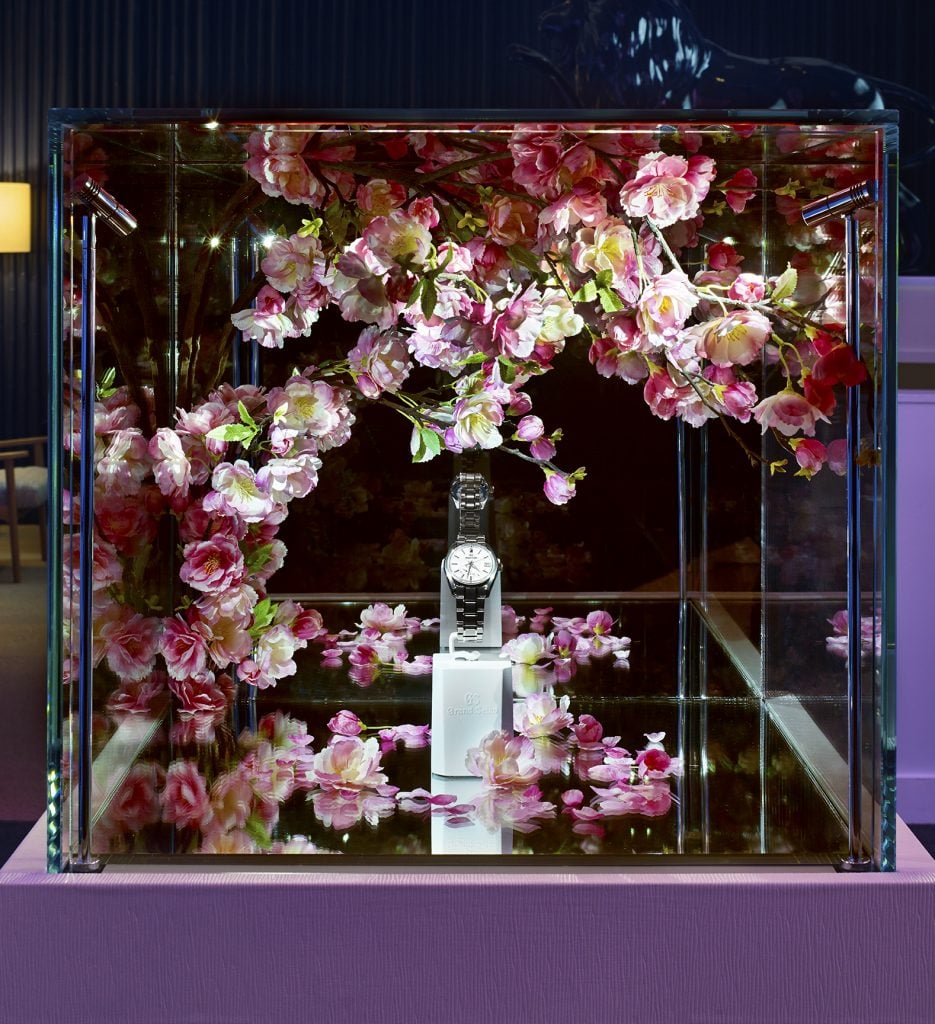
Since we can remember, the passage of time in all its forms has long inspired the work of artists around the world.

In Partnership with Grand Seiko

Time has long been a subject that conjured up great art.
From charting the rhythms of nature in cave art, to capturing the luminosity of sunrise or sunset, to imagining allegories of the stages of life, art has incorporated the passage of time as one of its great themes. Timepieces make a frequent appearance as muses. Salvador Dali’s famous The Persistence of Memory (1931) is sometimes referred to as, simply, Clocks. In Antonio de Perada’s Allegory of Vanity (1632-1636), an ornate golden clock squares off against other markers of time: a half-burned candlestick, an hourglass, skulls, and time-worn books.
In the contemporary art and design worlds—two industries that have become increasingly collaborative in recent years—a new kind of relationship has been forged, resulting in the ultimate intersection of art and time: the timepieces of Grand Seiko’s Nature of Time collection. These are made so painstakingly—with beautiful embellishments, precise details, and carefully constructed movements—that each one appears as a mini-work of art unto itself.
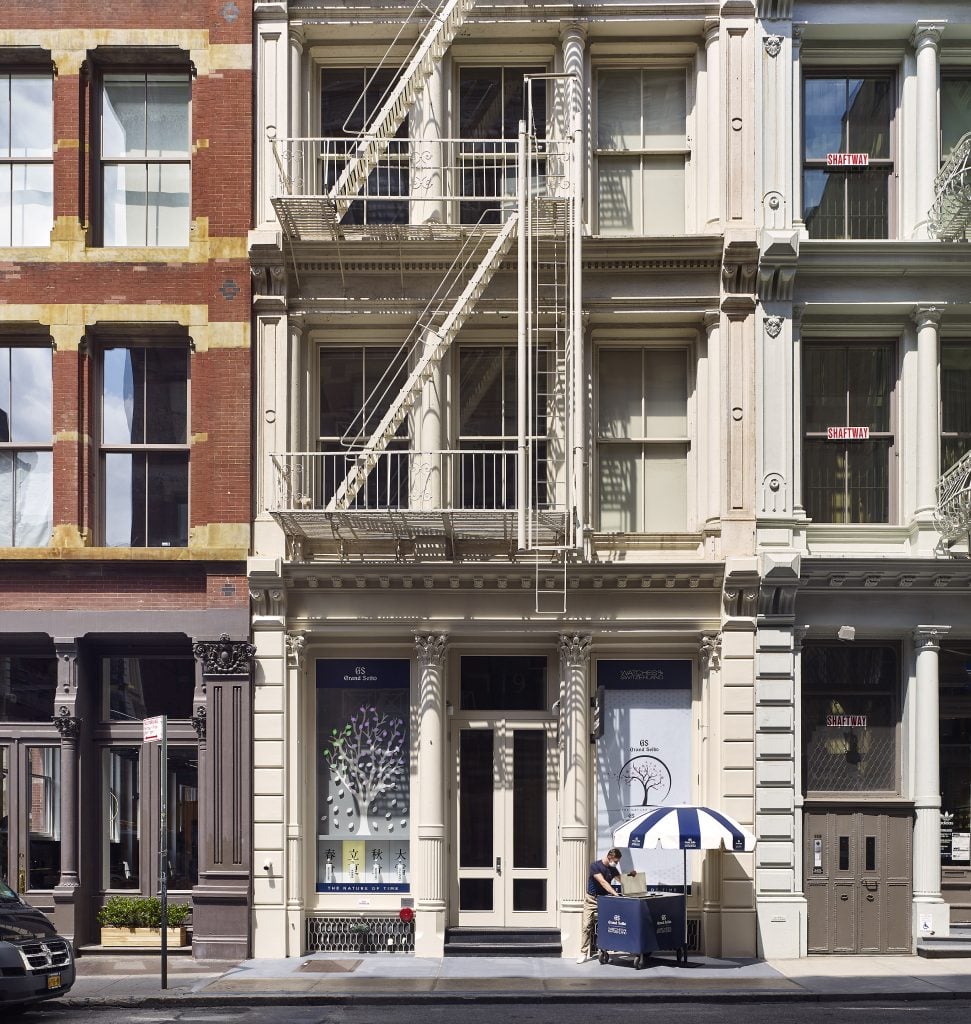
Grand Seiko’s Soho boutique. Photo courtesy Grand Seiko.
To celebrate its singular craftsmanship and Japanese heritage, Grand Seiko Corporation of America has announced a continuation of its partnership with retailer Watches of Switzerland, presenting a limited-edition timepiece gallery in Soho. Coinciding with the official opening of its retail store in the iconic New York neighborhood, the exhibition features the largest collection of Grand Seiko timepieces in the world in a space redefined for the individual luxury retail experience, with personalized and safe service.
The timepiece gallery features eight “zones” where guests can learn about what makes the brand’s watches tick. One zone, for instance, will use innovative technology to illustrate how Grand Seiko’s mechanical, quartz, and Spring Drive movements come to be. In another, guests will have the opportunity to experience the beautiful bars of Tokyo’s Ginza district in the downstairs VIP room known as the Takumi Lounge.
But the highlight of the “Nature of Time Experience,” as the show is called, is the exhibition of timepieces itself. This includes all the brand’s boutique collections worldwide, the recently released Watches of Switzerland exclusive Toge Special Edition GMT, and limited-edition 60th Anniversary pieces. At its heart is the complete Nature of Time collection, which pays tribute to Japan’s sublime seasonal beauty, illustrated by each piece through its own distinct combination of design and movement. From the Risshun piece, which celebrates the start of spring in early February, to Daikan, which suggests the rarified winter atmosphere of late January, the collection is a unique tribute to the rhythms of one of the world’s most beautiful countries.
To celebrate this collection and its coinciding gallery exhibition—which can also be experienced through Grand Seiko’s immersive Nature of Time Experience online platform—here are five famous artworks that showcase how great artists have translated their own senses of time, evolution, and entropy into meaningful contemporary art.
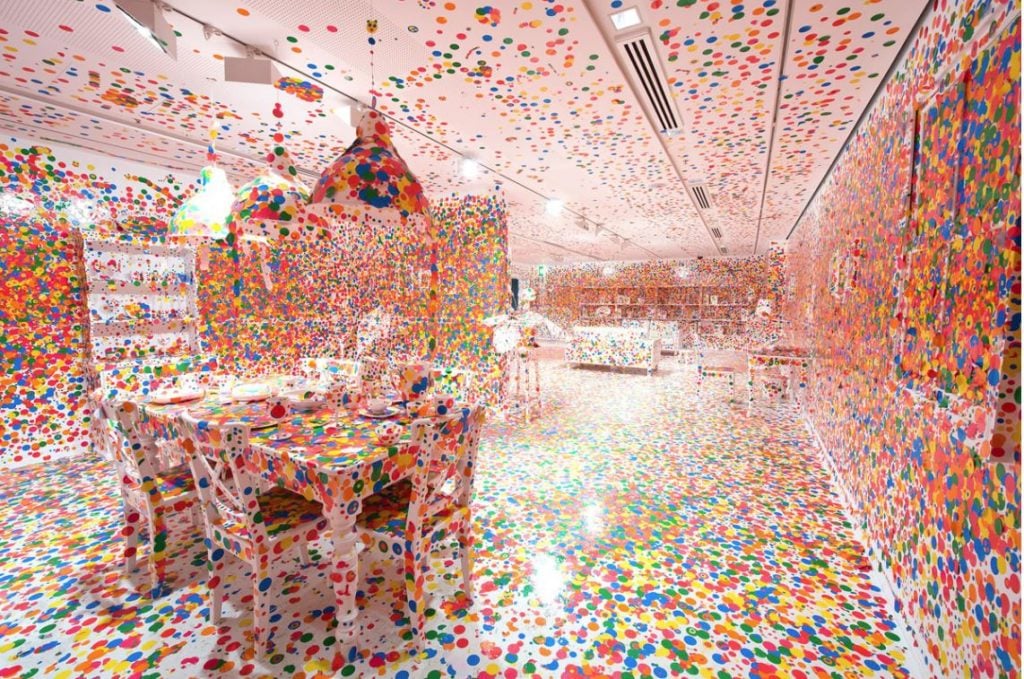
Yayoi Kusama, “The Obliteration Room,” 2002 to present. Collection: Queensland Art Gallery, Brisbane, Australia. Photograph: QAGOMA Photography. © Yayoi Kusama. Courtesy of Hirshhorn.si.edu.
Japanese artist Yayoi Kusama—the reining queen of immersive installation art—originally created the interactive Obliteration Room for children. First staged in 2002, Kusama’s work inventively allows the public to come together to literally mark the passage of time. From the walls to the furniture, it begins as an all white space. Over the course of several weeks, each new visitor is given a round sticker and invited to place it where they will, completely transforming the environment over time.
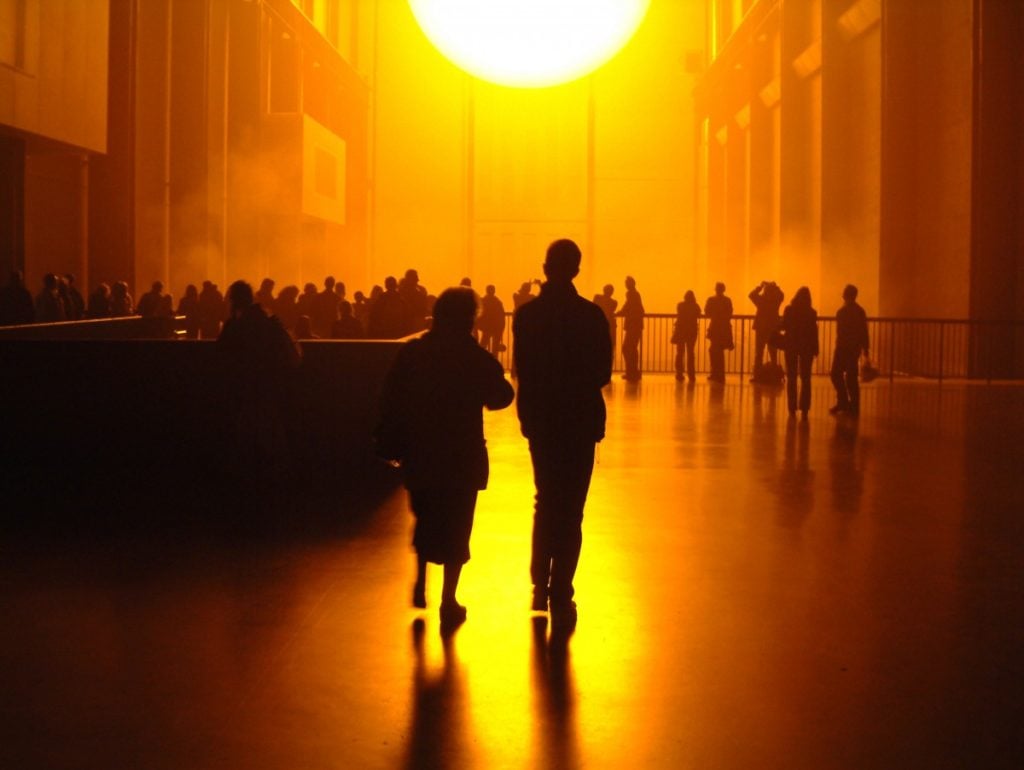
Olafur Eliasson’s The Weather Project (2003). Photo: Studio Olafur Eliasson
Courtesy the artist: neugerriemschneider, Berlin: and Tanya Bonakdar, New York
© Olafur Eliasson 2003.
In 2013, the Scandanavian artist Olafur Eliasson debuted arguably his most famous work of all: a massive installation that attempted to replicate the sun rising out of a mist that filled Tate Modern’s Turbine Hall. Entitled The Weather Project, the project drew visitors in with its rapturous atmosphere, appearing as though the sun itself had descended into the building. Eliasson used 200 low-sodium mono-frequency lamps to achieve this effect, which blocked out all other colors besides black and yellow, reframing the environment of the space entirely. While global warming sparked the idea for Eliasson, the relationship between time and weather contributed to his inspiration. “You will see clouds today that you will never see again,” the artist said, explaining the philosophical message he hoped it would leave his visitors with.
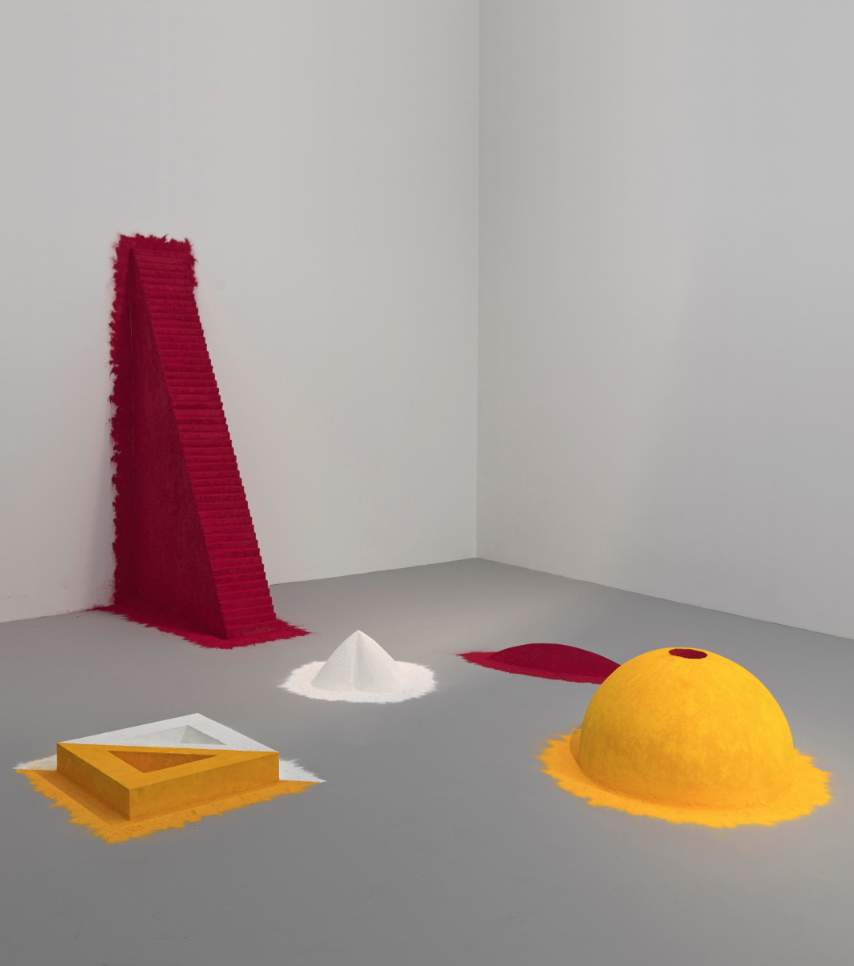
Anish Kapoor, 1000 Names (1981). Photo courtesy Lisson Gallery.
Indian-born British artist Anish Kapoor was born and raised in Mumbai before moving to London to study art during university. When he returned to India in 1979, he became inspired by piles of pigment placed along roadsides and at the entrances of temples, often used for ritual prayer. One of his first series that explored his interest in pigmented color, 1000 Names, took inspiration from such experiences and sought to realize shapes that integrate with their environment. Eventually, over time, the pigments spill out onto the walls and floors in which they have been placed. “1000 Names implies that the objects are part of a much bigger whole,” the artist explained. “The objects seem to be coming out of the ground or the wall, the powder defining a surface, implying that there is something below the surface, like an iceberg poking out of the subconscious.”
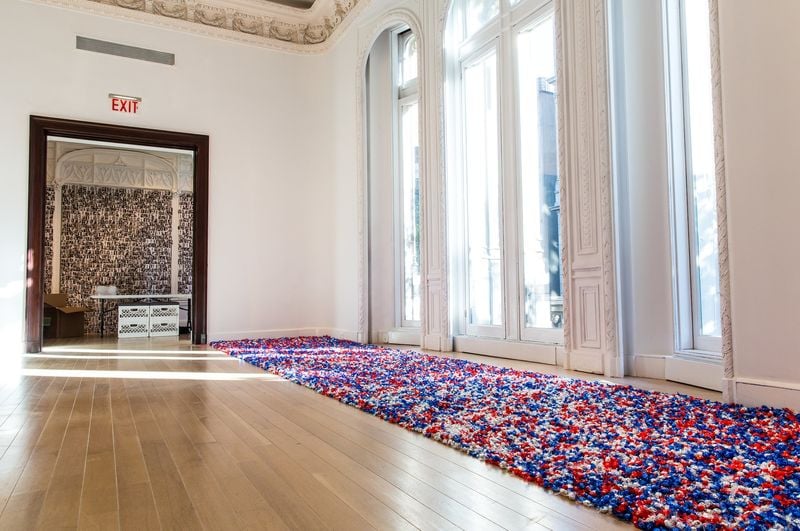
Felix Gonzales-Torres, “Untitled” (USA Today), 1990. Installation view from “Take Me (I’m Yours)” at the Jewish Museum, 16 Sep. 2016 – 5 Feb. 2017. © The Felix Gonzalez-Torres Foundation. Courtesy of The Felix Gonzalez-Torres Foundation.
Cuban-American artist Felix Gonzalez-Torres frequently addressed the theme of time in his work. His sculptural candy projects—like the one above, which refers to the American news publication—consist of hundreds of pounds of individually wrapped, shiny confections. These works seek to subvert the relationship between viewer and maker by extending the viewer the opportunity to take a piece of candy (or refrain from from doing so), thereby partaking in the work. Eventually, the candy would be replenished by the gallery, restoring the work to its original weight. The works stand as poignant commentaries on the idea of permanence as it is viewed and experienced over time.

Installation view, “teamLab: A Forest Where Gods Live, 2019” Mifuneyama Rakuen, Takeo Hot Springs, Kyushu © teamLab, courtesy Pace Gallery.
Unsurprisingly, Japanese art collective teamLab’s immersive works have become some of the most visited installation projects in recent years, perhaps best exemplified by A Forest Where Gods Live, an interactive digital installation that responds to human interaction and touch. First debuted in 2019, the lamps emit a color when a visitor nears them, in turn signaling to the other lamps that fill the space. As the visitor moves around the room, they experience shifts with every passing moment, filling the space with kaleidoscopic color and changing over time.